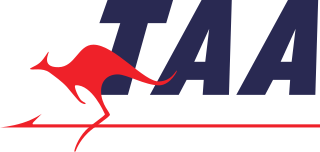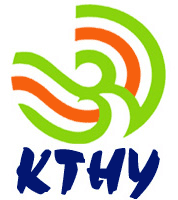
Kenya Airways Ltd., more commonly known as Kenya Airways, is the flag carrier airline of Kenya. The company was founded in 1977, after the dissolution of East African Airways. Its head office is located in Embakasi, Nairobi, with its hub at Jomo Kenyatta International Airport.

Croatia Airlines Ltd. is the flag carrier of Croatia. Its headquarters are in Buzin near Zagreb, the capital, and operates domestic and international services mainly to European destinations. Its main hub is Zagreb International Airport with focus cities being Dubrovnik, Split, and Zadar. Since November 2004, the airline has been a member of Star Alliance.

Trans Australia Airlines (TAA), renamed Australian Airlines in 1986, was one of the two major Australian domestic airlines between its inception in 1946 and its merger with Qantas in September 1992. As a result of the "COBRA" project, the entire airline was rebranded Qantas about a year later with tickets stating in small print "Australian Airlines Limited trading as Qantas Airways Limited" until the adoption of a single Air Operator Certificate a few years later. At that point, the entire airline was officially renamed "Qantas Airways Limited" continuing the name and livery of the parent company with the only change being the change of by-line from "The Spirit of Australia" to "The Australian Airline" under the window line with the existing "Qantas" title appearing above.

Air Vanuatu is an airline with its head office in Air Vanuatu House, Port Vila, Vanuatu. It is Vanuatu's national flag carrier, formerly operating to Australia, New Zealand, New Caledonia and points in the South Pacific. Its main base is Bauerfield International Airport, Port Vila. In May 2024 operations ceased with the airline placed into liquidation by the Government of Vanuatu. Limited domestic services resumed in August 2024.

Ansett Australia, originally Ansett Airways, was a major Australian airline group based in Melbourne, Victoria. The company operated domestically within Australia, and from the 1990s, to destinations in Asia. Following 65 years of operation, the airline went into administration in 2001 following a financial collapse and subsequent liquidation in 2002, subject to a deed of company arrangement. Ansett’s last flight touched down on 5 March 2002.

Biman Bangladesh Airlines, commonly known as Biman, is the national flag carrier of Bangladesh. With its main hub at Hazrat Shahjalal International Airport in Dhaka, the airline also operates flights from its secondary hubs at Shah Amanat International Airport in Chittagong and as well as Osmani International Airport in Sylhet. The airline provides international passenger and cargo services to multiple destinations and has air service agreements in 42 countries. The headquarters of the airline, Balaka Bhaban, is located in Kurmitola, in the northern part of Dhaka. Annual Hajj flights, transporting tourists, migrants, and non-resident Bangladeshi workers and the activities of its subsidiaries form an integral part of the corporate business of the airline. Bangladesh's air transport sector, which is experiencing an 8% annual growth rate thanks to a large number of outbound tourists, domestic tourists, and non-resident Bangladeshi travellers, is very competitive with stiff competition among some private Bangladeshi airlines as well as Biman.
Adria Airways d.o.o. was the flag carrier of Slovenia, operating scheduled and charter services to European destinations. The company's head office was at Ljubljana Jože Pučnik Airport in Zgornji Brnik, Cerklje na Gorenjskem, near Ljubljana. On 30 September 2019, the airline declared bankruptcy and ceased all operations.

Air Niugini Limited is the flag carrier of Papua New Guinea, based in Air Niugini House on the site of Port Moresby International Airport, Port Moresby. It operates a domestic network from Port Moresby to 12 major airports while its subsidiary company, Link PNG, operates routes to minor airports. It also operates international services in Asia, Oceania, and Australia on a weekly basis. Its main base is Port Moresby International Airport, which is located in 7 Mile, Port Moresby, Papua New Guinea. Niugini is the Tok Pisin word for New Guinea.

Air Djibouti, also known as Red Sea Airlines, is the flag carrier of Djibouti. It first flew in 1963 and ceased all operations in 2002. In 2015, the airline was relaunched, first as a cargo airline and then, in 2016, with passenger services as well. It is headquartered in the capital, Djibouti.

Empresa Ecuatoriana de Aviación, more commonly known as simply Ecuatoriana, was the national airline of Ecuador. The carrier had an operational hiatus between September 1993 and August 1995, resuming operations on 23 June 1996, after VASP became the controlling shareholder. The airline folded permanently in 2006.

Somali Airlines was the flag carrier of Somalia. Established in 1964, it offered flights to both domestic and international destinations. It operated Boeing 720Bs, Boeing 707-300s and Airbus A310-300s on a network to the Middle East and Europe. The airline discontinued operations in 1991 after the start of the Somali civil war.
Ryan International Airlines, Inc. was an American FAR 121 airline with domestic, flag, and supplemental authority.

East-West Airlines was an Australian regional airline founded in Tamworth, New South Wales in 1947. It operated to major regional city-centres and connected these centres to various state capitals, and by the 1980s it was Australia's third largest domestic airline. It also carried out its own heavy maintenance in Tamworth and operated a network of Travel Centres.

Cyprus Turkish Airlines Limited was a Turkish Cypriot airline that served as the flag carrier for Northern Cyprus. Until its collapse in June 2010, Cyprus Turkish Airlines was the primary airline flying passengers to Northern Cyprus.
Air Afrique was a Pan-African airline, that was mainly owned by many West African countries for most of its history. It was established as the official transnational carrier for francophone West and Central Africa, because many of these countries did not have the capability to create and maintain a national airline, and had its headquarters in Abidjan, Ivory Coast. The carrier was a member of the International Air Transport Association (IATA) as well as the French Union's smaller IATA-like ATAF.

Nigeria Airways Ltd., more commonly known as Nigeria Airways, was a one-time Nigerian airline. The company was founded in 1958 after the dissolution of West African Airways Corporation (WAAC). It held the name West African Airways Corporation Nigeria until 1971, when it was renamed, until it ceased operations in 2003. The government of Nigeria owned a majority of the airline (51%) until 1961, when it boosted its shareholding in the company to 100% and made it the country's flag carrier. At the time of dissolution, the airline's headquarters were at Airways House in Abuja. Operations were concentrated at Murtala Muhammed International Airport and served both domestic and international destinations mainly concentrated in West Africa; the network also had points in Europe, North America and Saudi Arabia. The airline was managed by a number of foreign companies, including British Airways, KLM and South African Airways.
TAP Maintenance & Engineering – the maintenance, repair and operations center of TAP Air Portugal airline – is located at Portela Airport, Lisbon, Portugal.
Anka Air, stylised as Ankair, is a charter airline headquartered in Istanbul, Turkey and based at Istanbul Airport. Founded in 2005 as World Focus Airlines, the company changed its corporate image to its current form in February 2008 as a result of publicity surrounding the crash of Atlasjet Flight 4203 on 30 November 2007.

As of January 2025, the Delta Air Lines fleet consists of 985 mainline aircraft, making it the second largest commercial airline fleet in the world, after United Airlines. Delta Air Lines operates a fleet manufactured by Airbus and Boeing.
Thai Airways International operates a fleet of wide-body and narrow-body aircraft from Airbus and Boeing.















